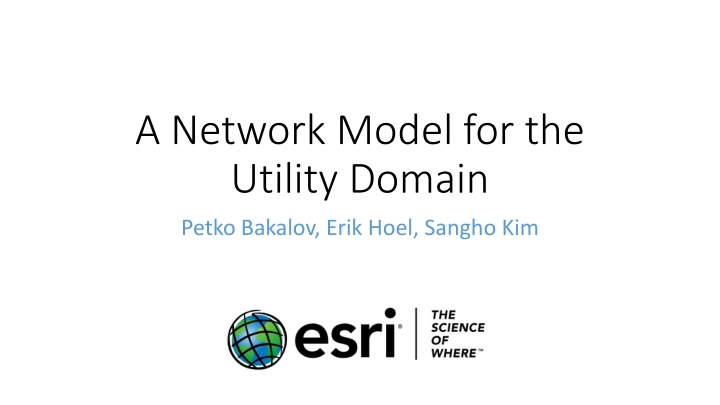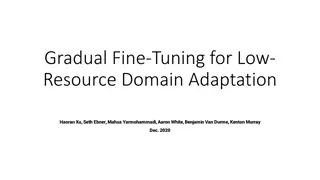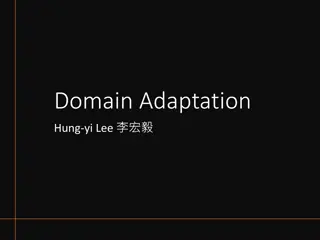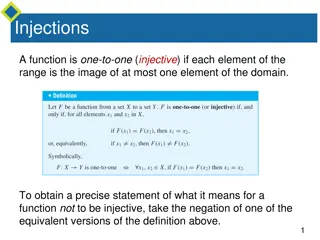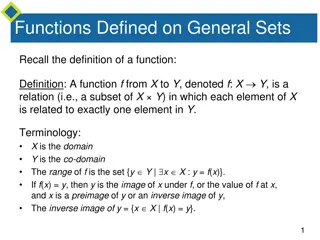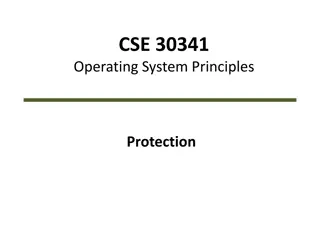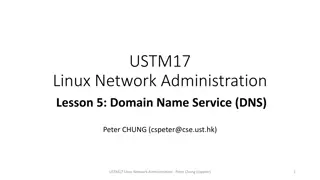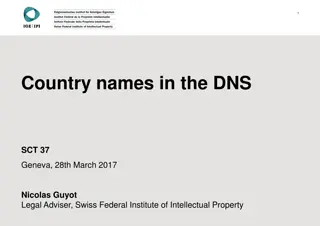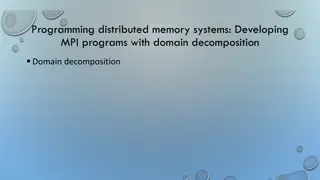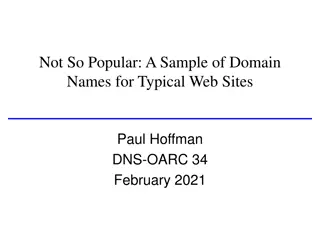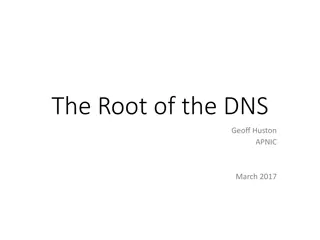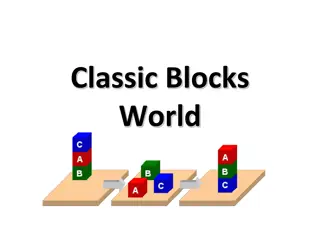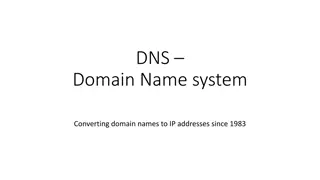A Network Model for the Utility Domain
Utility companies are enhancing their network autonomy to optimize performance. The integration of distributed generation and storage presents new challenges. A new utility-centric graph information model is proposed to overcome current limitations in modeling utility infrastructures, aiming for higher fidelity in system optimization.
Download Presentation

Please find below an Image/Link to download the presentation.
The content on the website is provided AS IS for your information and personal use only. It may not be sold, licensed, or shared on other websites without obtaining consent from the author.If you encounter any issues during the download, it is possible that the publisher has removed the file from their server.
You are allowed to download the files provided on this website for personal or commercial use, subject to the condition that they are used lawfully. All files are the property of their respective owners.
The content on the website is provided AS IS for your information and personal use only. It may not be sold, licensed, or shared on other websites without obtaining consent from the author.
E N D
Presentation Transcript
A Network Model for the Utility Domain Petko Bakalov, Erik Hoel, Sangho Kim
The context Utility companies (water, gas, electric ,fiber, telco) have dramatically increased the autonomous capabilities of their networks Switching operations (reconfiguration of the network topology) are performed by autonomous devices (e.g., SCADA) in order to optimize performance and efficiency Distributed generation (e.g., solar power) and storage (batteries, electric cars) introduce additional complexities impacting the flow of and modeling of resources in the network Optimization of these complex dynamic systems requires a much higher fidelity of modeling than in the past; e.g., Transformer banks, substations, underground Order of magnitude larger than previously e.g., 100M+ features 2
Example: transformer bank Phase B Phase A Phase C Transformer units Arrestors Fuses Three phases A, B, C Fuse Arrestor Transformer unit
ABCN F Fuse Transformers wye-wye configuration ABCN A Arrestor F F F C B A T Transformer A A A C B A B A C N H2 H1 H2 H2 H1 H1 T X2 T X2 T X2 X3 X1 X3 X1 X3 X1 a n b c abcn n a b c abcn 4 4
The problem The problem: current network models have limitations and constraints that limit their ability to effectively and accurately model the rapidly increasing complexity and sophistication of the utility networks The goal: Introduces a new utility- centric graph information model that can support the complex modeling of utility infrastructures 5
The problem Transportation networks Low junction valence High depth first search analysis ~10M features Utility networks Medium junction valence Mixture of BFS and DFS analysis ~100M features Continually edited and autonomously reconfigured Social networks High junction valence Shallow depth, wide breadth first search analysis ~1B features Junction valence 6
Outline Overview of the utility network model Network index Logical structure Physical storage Network index maintenance Establishing connectivity Maintaining connectivity Experimental results 7
Network model definition A mechanism for defining and managing connectivity information between features in a geodatabase A feature is graphic representation of a real-world object Lines (e.g., pipes, power lines, telephone cables) Points (e.g., valves, transforms, switchgear) 8
Feature Sources Network Index (Graph) Junction Attributes Point Features Edge Attributes Edge Line Features Containment Table Sources Junction Associations Metadata Connectivity Model Attribute Model Containment 9
Network index elements The connectivity information is explicitly represented with network elements that are found in an associated network index (graph) Junctions Edge Three types of network elements in the index: Junctions Edges Containment Containment 10
Network index attributes Network attributes are properties of the network elements that control traversability Cost. Certain attributes are used to measure and model impedances, such as voltage drop Descriptors. Those are attributes that describe characteristics of the network or its elements such as open/closed switch 11
Network model maintaining the index Build the process of discovering geographic coincidence between features that are persisted as junction and edges in the network index As edits are made to the features, the network index becomes stale We keep track of the modified features Employ the dirty area concept (an envelope encompassing the edited feature) When a feature is modified, a dirty area is created The build process incrementally maintains the network index based upon the present dirty areas 12
Outline Overview of the utility network model Network index Logical structure Physical storage Network index maintenance Establishing connectivity Maintaining connectivity Experimental results 13
Network index logical structure Network Index Connectivity between the features in the model using foreign keys Those are referred as EIDs Junction EIDs Edge EIDs Containment EDs Very compact representation 14
Network index logical structure Network index Typically stored in RDBMS The information in the network topology is stored in a set of binary and relational tables Feature Source Connectivity Tables Element Mapping Table Network Attribute Tables Feature Source Reverse Mapping Tables Containment & Structural attachment Tables Feature Source Metadata Tables 15
Logical network model element mapping The Element mapping tables contains the mapping information between feature space and network elements. Foreword element mapping done using regular database table. Reverse element mapping done using binary table 16
Logical network model connectivity table The schema structure is designed to answer the most common adjacency query during analysis find the edges and junctions connected to a given junction For each junction, we store adjacent edge IDs, and also the IDs of the junctions at the other end of the edges This includes the from and to edges 17
Physical storage model fixed length binary records A BLOB table is essentially a contiguous binary stream of records, in which the physical storage is divided into multiple BLOB pages Each record in the fixed size BLOB has a fixed size so the page number and the offset of the record in respect to the beginning of the page can be directly calculated ETOPO edge EID 5001 from jcn EID 5002 from jcn EID 18
This index stores the record offsets for a given id within the page 2000 2006 2010 2013 Physical storage model variable length binary records 0 Embedded Weights 2000 The connectivity and relationship information have variable length by nature We fix the number of records per page - 4K We need a fixed length index structure (or header) at the beginning of each BLOB page to store the record offsets Entry 1 Entry 2 Entry 3 Entry 4 Data section of the page Embedded Weights 2005 Entry 5 Entry 1 Entry 2 Entry 3 Embedded Weights Embedded Weights 2010 Entry 1 Entry 2 Entry 1 Embedded Weights Entry 1 Entry 2 Entry N ... Edge Embedded attributes 1/0 Edge EID Junction EID Attribute 1 1/0 Attribute 2 Attribute 3 19 Indicates if attribute 2 is null or not
Outline Overview of the utility network model Network index Logical structure Physical storage Network index maintenance Establishing connectivity Maintaining connectivity Experimental results 20
Build algorithm Initial build of the network index Simply a special case of a rebuild over a dirty region that encompasses the entire network Network index is empty prior to the initial build Incremental (re)builds Rebuilt region corresponds to the dirty regions When we rebuild the dirty regions, the resulting network index is completely correct 21
Build algorithm step 1: data extraction Extract the geometry of all features in the network model. Decompose line geometry into its constituent vertices Store the points and vertices in a single table with X,Y attributes. Vertex Table Feature ID (X,Y) JID Line feature 1 Line feature 1 (0, 0) Point Feature 1 Line feature 1 (0,1) Line feature 1 (0,2) Line feature 2 (0,1) Line Feature 2 (2,1) Line feature 2 Line Feature 2 (2,0) Point Feature 1 (2,1) Point End point vertex Midspan vertex 22
Build algorithm step 2: connectivity analysis Sort the vertex information in the table by coordinate values so that the coincident vertexes are grouped together Analyze each group of coincident vertexes according to the connectivity model Vertex Table Feature ID (X,Y) JID Line feature 1 (0, 0) Line feature 1 (0,1) Line feature 2 (0,1) Line feature 1 (0,2) Line Feature 2 (2,0) Line Feature 2 (2,1) Point Feature 1 (2,1) 23
Build algorithm Step 3: junction creation Create junction elements and populate vertex information table from the extracted connectivity nodes Vertex Table junction 1 Feature ID (X,Y) JID Line feature 1 (0, 0) J4 Line feature 1 (0,1) J2 junction 2 junction 3 Line feature 2 (0,1) J2 1. For each connectivity node Line feature 1 (0,2) J1 2. Create a junction element Line Feature 2 (2,0) J3 Line Feature 2 (2,1) j3 3. If there is a point feature in node junction 4 junction 5 Point Feature 1 (2,1) 4. Associate the junction with the point 5. For each line vertex 6. Tag the record with the junction element 24
Build algorithm step 4: edge creation Create edge elements from vertex information table Vertex Table junction 1 Feature ID (X,Y) JID Line feature 1 (0, 0) J4 Line feature 1 (0,1) J2 junction 2 1. Sort the vertex information table using FID junction 3 Line feature 1 (0,2) J1 Line feature 2 (0,1) J2 2. For each adjacent pair of records Line Feature 2 (2,1) J3 3. If the pair involves the same line feature Line Feature 2 (2,0) j5 junction 4 junction 5 Point Feature 1 (2,1) 4. Create an edge between them 25
Outline Overview of the utility network model Network index Logical structure Physical storage Network index maintenance Establishing connectivity Maintaining connectivity Experimental results 26
Experimental results build algorithm profiling Junction Creation 49% Expensive steps are reading and writing to the RDBMS Sorting takes only 3% of the total time Junction Sort 2% Element Sorting 3% Data Edge creation 16% Extraction 14% Edge Sort 1% Connectivity analysis 18% 27
Experimental results page size sensitivity 68 64 MB 66 128 MB The increase of the page size improves the performance of the analytical operation However BLOBs take more time to be transmitted over the network Optimal size page - 64 KB 52 256 MB 64 512 MB 62 Trace time (sec.) 60 58 56 54 512 REC 1024 REC 2048 REC 4096 REC 8192 REC 8 KB 16 KB 32 KB 64 KB 128 KB 28
68 Experimental results cache size sensitivity 66 Because we performed spatial clustering the trace was able to stay focused only on the most recently picked pages The LRU cache replacement policy was performing extremely well. 64 62 Trace time (sec.) 60 58 56 8 KB 512 rec 16 KB 1024 rec 32 KB 2048 rec 64 KB 4096 rec 128 KB 8192 rec 54 52 64 MB 128 MB 256 MB 512 MB 29
